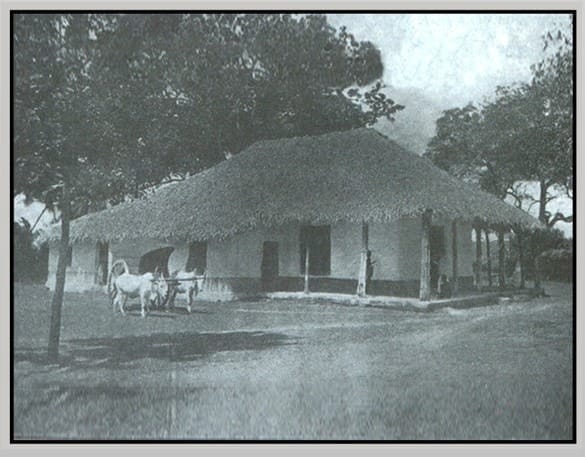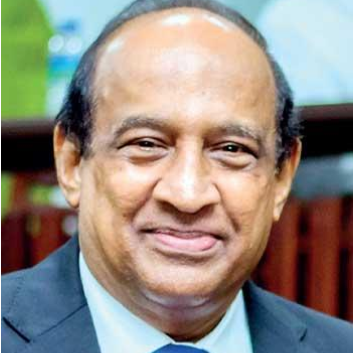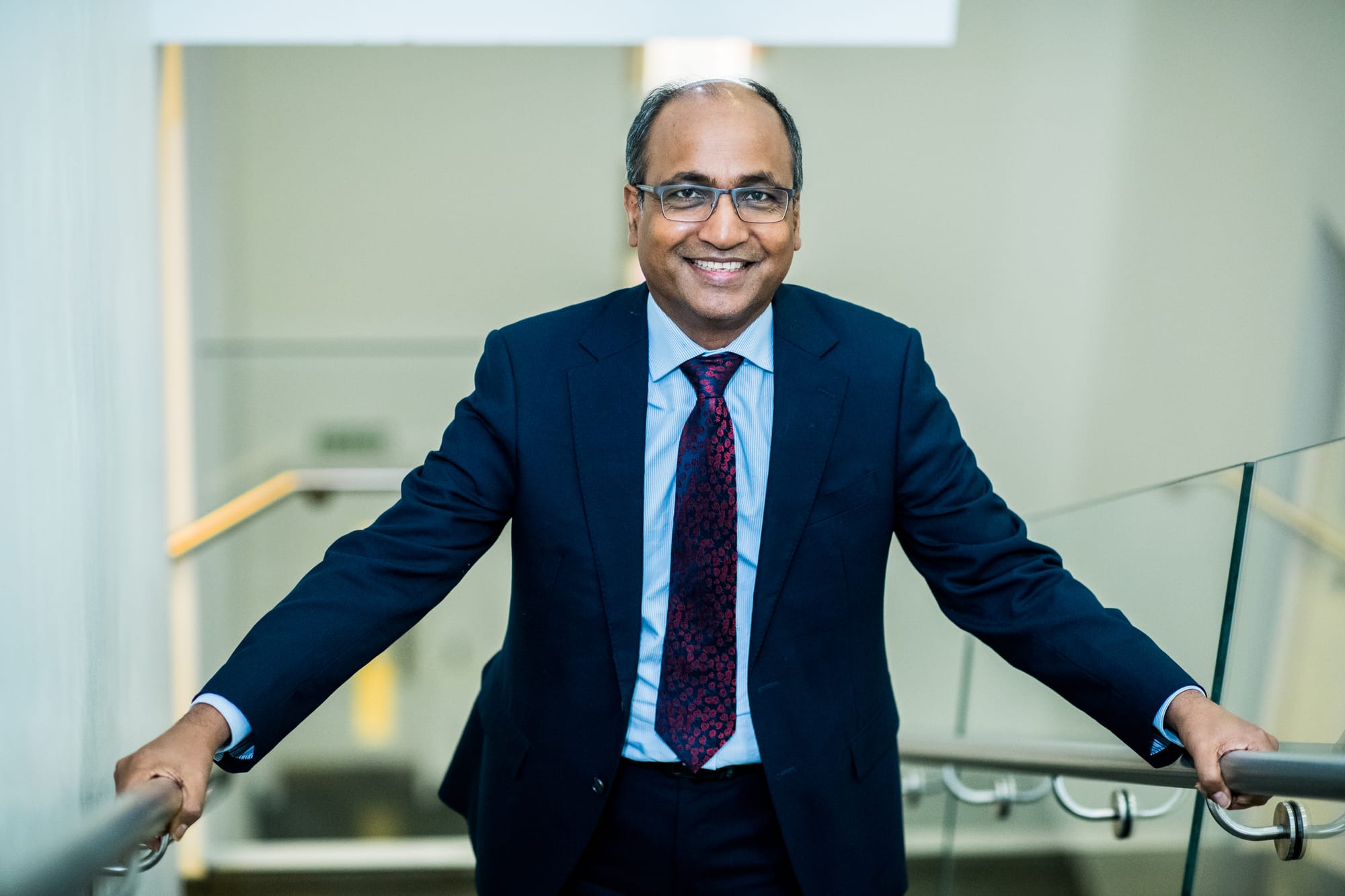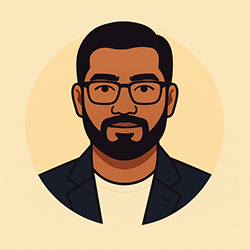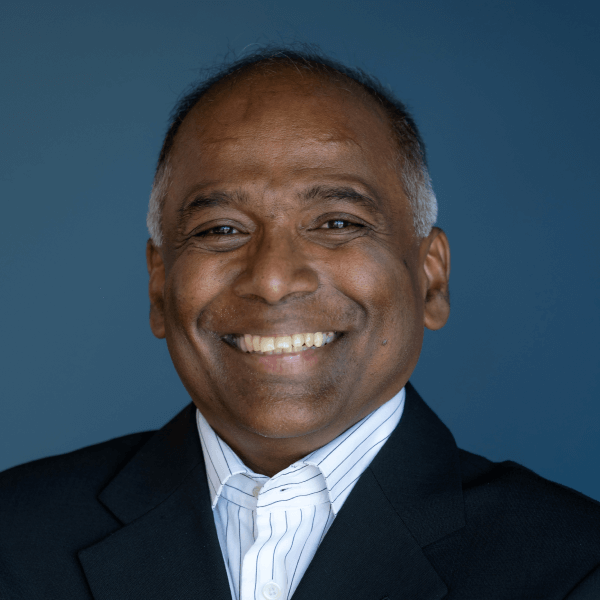The origins of organized healthcare in Jaffna, in the North of Ceylon can be traced to the pioneering efforts of the American Ceylon Mission in the early 19th century. Rev. Dr. John Scudder, the first medical missionary to Ceylon, arrived in Jaffna in 1819 and, in June 1820, established a small dispensary at Pandatherippu—the first medical mission dispensary in the world. This modest initiative marked the beginning of Western medical practice in the region. Combining Christian service with medical care, the missionaries introduced systematic healthcare delivery, public health principles, and medical education, setting in motion a tradition of philanthropic, compassionate and community-oriented medicine that profoundly influenced the development of hospitals and medical institutions throughout the Northern Province.
Father of Medical Education in Ceylon
Among the many medical missionaries who came after Rev. John Scudder, Dr. Samuel Fisk Green (1822–1884) occupies a unique place in the medical history of Ceylon. A graduate of the College of Physicians and Surgeons, New York, Green arrived in Jaffna in 1847 and served with the American Ceylon Mission until 1873.
If Scudder planted the seed, it was Green who cultivated it into something enduring. In 1848, he founded both a hospital and a medical school at Manipay, later known as the Green Memorial Hospital. This institution became one of the earliest organized medical training centers in Asia. Green's vision went beyond patient care: he trained over sixty native doctors, thereby spreading Western medical knowledge throughout Ceylon.
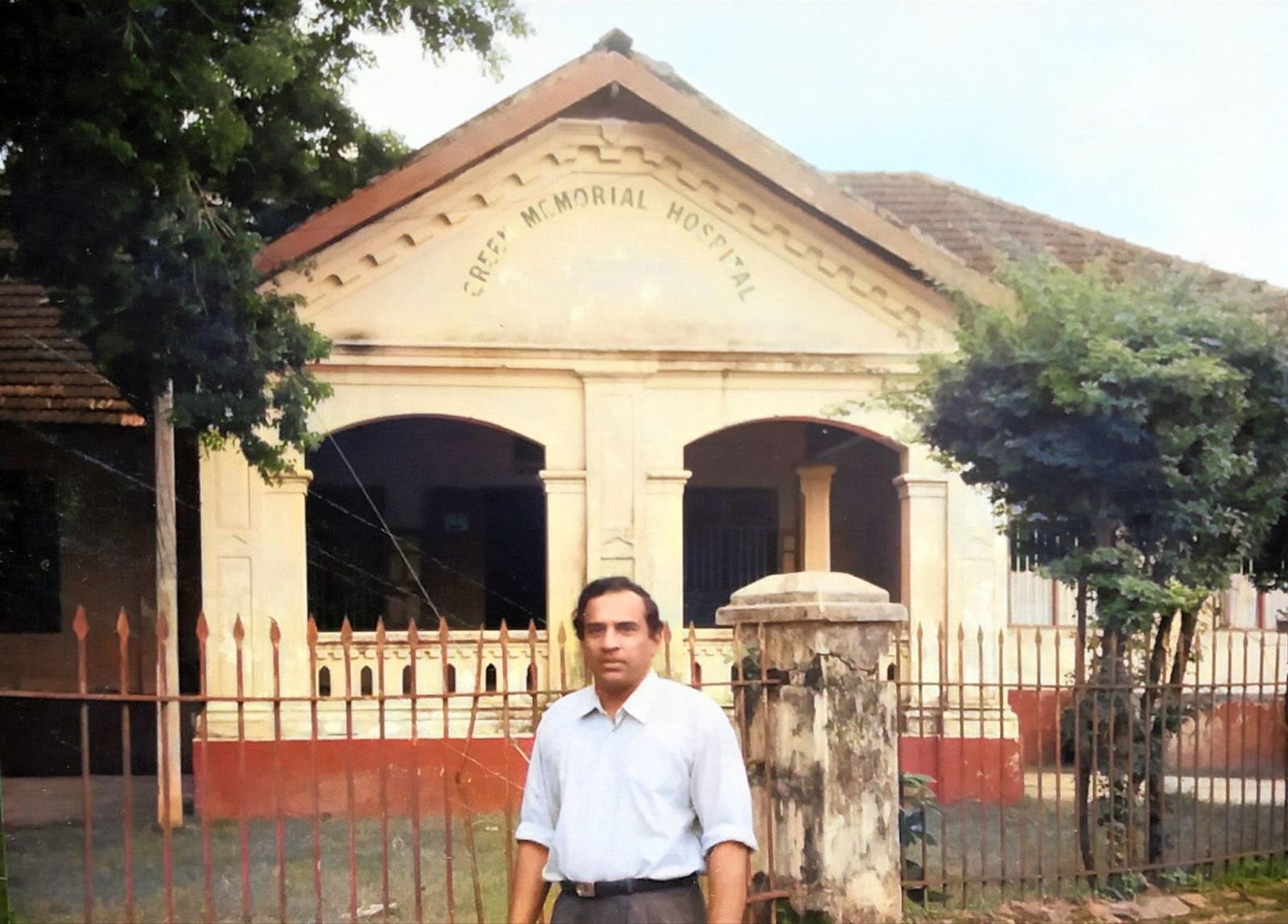
Equally significant was his pioneering work in medical translation—he rendered numerous English medical textbooks into Tamil, ensuring that local students could access modern scientific knowledge in their own language. For these lasting contributions, he is widely remembered as the "Father of Medical Education in Ceylon."
Friend-in-Need Society Hospital, Jaffna
The history of health care in Jaffna is deeply tied to philanthropy and civic responsibility. One of the earliest examples was the Friend-in-Need Society Hospital, founded in 1850 by local leaders to serve the poor and those without access to private care. At a time when medical services in Ceylon were concentrated in garrison towns, this voluntary initiative reflected a broader 19th-century movement in which communities, inspired by charitable ideals, created institutions for the underprivileged.
Sustained by public subscriptions, wealthy donors, and benefactors, the hospital embodied compassion over profit. The colonial administration, while running military and civil services, depended on such philanthropic ventures to extend care into the provinces. Governor Sir William Dyke (1883–1890) endorsed the hospital, giving it prestige and official encouragement.
Though not directly attached, Dr. Samuel Fisk Green's pioneering medical training at Manipay shaped many local practitioners who served at the hospital. His emphasis on Tamil-medium education aligned with the Society's ethos of accessibility.
By the early 20th century, voluntary management reached its limits. In 1907, the colonial government absorbed the institution as the Jaffna Civil Hospital, ensuring sustainability and integration into the island's health system—while preserving its philanthropic legacy for future generations.
Jaffna Civil Hospital – Growth through the 20th Century
Throughout the 20th century, Jaffna Civil Hospital grew from a modest provincial facility into the premier centre of healthcare in the Northern Province, serving Jaffna, Kilinochchi, Mannar, Mullaitivu, and Vavuniya. Its expansion included new wards, surgical theatres, and outpatient clinics in key specialties, establishing it as the regional referral hub.
The late 1920s–30s were formative for surgery. Eminent FRCS-trained surgeons Dr I. T. Karunaratnam, Dr A. H. C. de Silva, and Dr Milroy Paul elevated standards. With only 200 beds and a six-bed private ward, the hospital was modern for its time. Dr Paul's tenure was particularly transformative. He professionalized the operating theatre, procuring a high-pressure sterilizer from Colombo and personally training staff. His dedication was legendary: he performed emergency operations at night under petromax lamps and torchlight, maintaining meticulous aseptic standards even under these challenging conditions. In 1931, he reported remarkably low rates of postoperative sepsis, which he attributed to controlled visiting hours, strict adherence to aseptic practices, adequate space preventing overcrowding, and dedicated nursing care.
After independence, government investment transformed it into the General Hospital, Jaffna. Specialists in medicine, surgery, paediatrics, obstetrics, and later subspecialties consolidated its tertiary-care role. By 1960, it was recognized by the Royal College of Surgeons of England as a training centre — rare outside Colombo. The 1960s saw the opening of cardiothoracic (1963) and neurosurgical (1967) units, though both closed after 1983 due to conflict.
A vibrant professional community flourished: the Jaffna Clinical Society (1940s) evolved into the Jaffna Medical Association (JMA), which organized scientific sessions and gave voice to doctors during wartime. The launch of the Jaffna Medical Journal (1958) provided an academic outlet and documented regional health patterns.
By the late 20th century, Jaffna General Hospital stood as the North's largest health institution — a beacon of clinical care, education, and resilience, embodying philanthropy and professional dedication.
Transformation into a Teaching Hospital: Partnership with the University of Jaffna
A decisive transformation came in 1978 with the establishment of the Faculty of Medicine at the University of Jaffna. At that time, the Provincial Hospital in Jaffna was declared the Teaching Hospital of the new Faculty. This formal affiliation meant the hospital would serve as the primary clinical training ground for medical undergraduates, postgraduates, and allied health students in the Northern Province.
The partnership with the university created new patterns of organization and purpose. Distinct clinical departments were established, each headed by academics who combined teaching, research, and patient care. The introduction of structured undergraduate and postgraduate curricula emphasized problem-based learning, community medicine, and exposure to endemic health issues such as malnutrition, snakebite, tuberculosis, and chronic kidney disease. Research activities increasingly reflected the region's priorities, with staff and students engaging in field studies and clinical audits relevant to the Northern population.
The teaching role also helped attract specialist staffing, equipment, and external academic collaborations, with links to other medical faculties in Sri Lanka and universities abroad. Postgraduate training programs under the Postgraduate Institute of Medicine (PGIM) allowed young doctors from the North to pursue specialty training while remaining in their home province.
Despite this progress, the onset of civil conflict in the 1980s introduced immense operational challenges. Academic staff shortages, resource constraints, and difficulties in maintaining international collaborations tested the resilience of both the hospital and the Faculty. Yet, the commitment of local staff ensured the continuation of teaching and patient care, reinforcing the hospital's role as a cornerstone of higher medical education in Northern Sri Lanka.
The Teaching Hospital During the Conflict
Amid one of South Asia's longest internal wars, the Jaffna Teaching Hospital became both a casualty and a lifeline. Repeated shelling, shortages of medicines and anaesthetics, and the flight of skilled staff strained its capacity, yet it remained the North's principal referral centre — treating mass casualties while sustaining emergency and maternal care.
In October 1987, artillery fire struck the hospital itself, killing patients and staff — an attack condemned internationally, with the ICRC invoking protections under the Geneva Conventions. A decade later, during the 1995 siege of Jaffna, Médecins Sans Frontières (MSF) surgeons joined local teams, keeping surgical services alive and spotlighting the need for neutral medical space.
Throughout the conflict, the ICRC maintained a presence, negotiating access and reminding warring parties of their obligations. Despite devastation, the hospital's staff persevered — ensuring it remained not just a medical facility but a symbol of resilience and professional duty amid war.
Jaffna Teaching Hospital – Post-Conflict Years
The end of the armed conflict in 2009 marked a turning point for the Jaffna Teaching Hospital. After decades of disruption, it entered a phase of reconstruction and renewal: damaged facilities were restored, departments re-equipped, and new specialists recruited. External support, especially Japanese assistance, funded modern wings for operating theatres, ICUs, and diagnostics, transforming the hospital into a well-resourced tertiary centre.
As the only centrally-administered tertiary hospital in the Northern Province, it anchors referral chains across Jaffna, Kilinochchi, Mannar, Mullaitivu, and Vavuniya. Its role extends beyond clinical care — supporting district hospitals, collaborating on epidemic preparedness, and serving as the nerve centre of regional health security.
Yet challenges persist. The conflict left damaged infrastructure and triggered a brain drain of skilled staff. Today, high patient volumes, overcrowded wards, and limited specialists strain capacity. The COVID-19 pandemic and economic crisis compounded these pressures, with shortages of medicines and equipment testing resilience.
Looking ahead, sustaining progress will depend on stable recruitment, adequate funding, and professional development, alongside partnerships with government, universities, and international agencies. Despite obstacles, the hospital remains both a symbol of resilience and a cornerstone of the Northern Province's aspirations for an equitable, future-ready health system.
Services, Capacity, and Present Configuration
Today, the Jaffna Teaching Hospital stands as the Northern Province's premier tertiary-care centre and the primary training site for the Faculty of Medicine, University of Jaffna, serving a population of over 610,000.
Its departments cover the full range of specialties — medicine, surgery, obstetrics and gynaecology, paediatrics, orthopaedics, ophthalmology, ENT, psychiatry, neurology, cardiology, nephrology, oncology, respiratory medicine, gastroenterology — as well as subspecialties including transplant, vascular, cardiothoracic and neurosurgery, and oral and maxillofacial surgery. Supporting services include advanced diagnostics, imaging, and a modern blood bank. Critical care is delivered through dedicated medical, surgical, neonatal and coronary ICUs.
The hospital now has 1,450+ beds and treats 4,500 patients daily, with hundreds of thousands of annual outpatient visits. Its workforce of over 2,000 staff includes 93 consultants, 250+ medical officers, 750 nurses, and supporting cadres, integrating government, academic, and visiting specialists.
Recent milestones highlight its renewed capacity: the first open-heart surgery (2017), first kidney transplant (2021), and first bone marrow transplant (2024) in the region. These advances, enabled by post-war reconstruction and international partnerships, have reduced reliance on Colombo and improved equitable access.
Tellippalai Trail Cancer Hospital
Though separate from the Jaffna Teaching Hospital, the Tellippalai Trail Cancer Hospital is the only specialised cancer centre in the Northern Province, also treating patients from the East. It was built through the Trail 2011 walk, a community fundraising event from Dondra to Point Pedro, which mobilised over 30,000 participants, 250,000 donors, and raised USD 2.6 million under the Colours of Courage Trust. The hospital opened in January 2014.
With about 120 beds for men, women, and children, it offers outpatient clinics, chemotherapy, iodine therapy, imaging, counselling, pharmacy, emergency care, and a teaching centre, with radiotherapy and brachytherapy units planned. Consultant oncologists also conduct clinics at the Jaffna Teaching Hospital.
The hospital, however, faces serious staffing shortages, especially oncologists and medical officers, leading to overburdened staff and compromised care. Governance and funding are further hampered by its current status under provincial administration, unlike the centrally run Apeksha Cancer Hospital, Maharagama. Advocates argue for a similar autonomous leadership model with central oversight to ensure accountability, attract resources, and secure sustainable oncology services.
The Tellippalai Trail Cancer Hospital remains both a symbol of community mobilization and a lifeline for cancer patients in northern Sri Lanka, but its future rests on stronger investment and institutional reform.
The Jaffna Medical Association
The Jaffna Medical Association (JMA), the peninsula's only medical body, traces its roots to the Jaffna Clinical Society founded in 1941, with Dr. S. Subramaniam, then Provincial Surgeon, as its first President. Its aim was to advance medical knowledge in the Northern region of Ceylon.
A major contribution was the launch of the Jaffna Medical Journal (JMJ) in 1953, which published local research and case reports, giving clinicians in an isolated setting a platform to share insights nationally and internationally.
In 1969, under Dr. Kolitha Karunaratne, it became the JMA, adopting the motto "Ab Uno Disce Omnes" ("From one learn all"). It grew into a centre for professional development, ethics, and community health, with annual academic sessions as its hallmark.
In 1982, the Association inaugurated the Dr. V. T. Pasupathy Memorial Lecture, honouring its distinguished past president and former Director of Medical Services, Northern Division. The inaugural lecture by Dr. P. Sivasubramaniam, FRCS, also introduced the Pasupathy Medal, later recorded in the JMJ.
Tragically, the North-East conflict in 1983 brought JMA's activities to a halt, cutting short a vibrant tradition of academic and professional exchange in the Northern Province.
Reactivation of the Jaffna Medical Association – 1999
After Operation Riviresa (1995) restored limited normalcy to Jaffna, displaced doctors gradually returned to the peninsula, resuming work at the Jaffna Teaching Hospital and re-engaging with the Faculty of Medicine. Within this fragile peace, the medical community made a defiant statement: they would revive the Jaffna Medical Association after sixteen years of silence.
In September 1999, the JMA organized its annual academic sessions—a decision that carried both symbolic and practical significance. It marked the rebirth of academic life in a region devastated by war, provided an opportunity for doctors to share knowledge after years of isolation, and reaffirmed the medical profession's commitment to scholarly tradition despite ongoing difficulties.
The three-day event, held from September 9–11, featured presentations by junior doctors, seminars, symposia, and guest lectures on topics including Incisional Hernia and Laparoscopy in Surgery. The centerpiece was the restoration of the Dr. V. T. Pasupathy Memorial Oration, conducted with full ceremonial dignity. A formal procession of council members and the mace bearer preceded the President, Dr. V. Kunannandam, who decorated the orator before the lecture on "Overview of Dysphagia"—a subject chosen for its broad clinical relevance to doctors, medical students, and nursing staff.
Despite travel restrictions, the sessions drew senior health officials, including the Additional Director General of Health Services. Arrangements were made through Sri Lanka Air Force aircraft, with accommodation at the hospital's doctors' quarters. The three-day meeting concluded with fellowship and dinner, underscoring the resilience and determination of the medical community. The successful revival after sixteen years represented more than an academic gathering; it symbolized the re-emergence of professional unity and intellectual renewal in a region striving to recover from decades of disruption.
Momentum grew from this foundation. In May 2005, the JMA hosted its first joint meeting with the College of Surgeons of Sri Lanka in Jaffna — a landmark event during ongoing conflict. Senior and junior surgeons from across the island participated, including past presidents who had once served in Jaffna in the 1960s. The inauguration combined academic dignity with Northern cultural traditions—traditional Jaffna songs, music, dance, and a sumptuous array of seafood and customary dishes—reinforcing a spirit of friendship that transcended the political divide.
Encouraged by its success, joint meetings with national associations became regular, including annual meetings with the Sri Lanka Medical Association. These exchanges revitalized not only academic activity but also symbolized unity, reconciliation, and the enduring value of professional collaboration across regions. The JMA's revival restored scholarly exchange and became a powerful symbol of renewal in a region emerging from decades of disruption.
Jaffna Medical Museum and Heritage Efforts
Opened in March 2025 in the Centenary Building of Jaffna Teaching Hospital, the Jaffna Medical Museum preserves the region's medical heritage. Guided by Hospital Director Dr. T. Sathiyamoorthy and curated by Mr. B. Dhuvarahan, with Mr. S. Gunaseelan as Honorary Patron, it showcases instruments, documents, photographs, and artefacts tracing medicine in the North — from colonial beginnings through conflict and recovery.
The museum enriches medical education by serving as a teaching aid, offers resources for historians, and fosters civic pride by highlighting the role of healthcare workers in crisis and peace. More than preservation, it reflects a maturing institutional identity, turning memory into a living resource for education, scholarship, and public engagement.
Education, Research, and the Future
Integrated with the University of Jaffna Faculty of Medicine, the hospital provides undergraduate and postgraduate training, internships, and research opportunities. Studies focus on regional priorities such as trauma, tropical diseases, and maternal health. Alumni networks and overseas associations support exchanges, visiting faculty, and fundraising.
The Telemedicine Unit, established in 2019 within the museum, has hosted 550+ global team meetings discussing over 3,600 cases, linking local clinicians with international expertise.
Priorities ahead include:
1. Consolidating postgraduate training to retain specialists
2. Strengthening locally relevant research
3. Securing sustainable financing
4. Expanding telemedicine and outreach clinics
5. Continuing heritage projects to connect past and future
Continuity and Transformation
From the Friend-in-Need clinic of the 1850s to today's teaching hospital performing bone marrow transplants, Jaffna's medical journey reflects colonial legacies, conflict trauma, and professional resilience. Now both a centre of care and custodian of heritage, the institution faces urgent pressure for a modern hospital complex that meets international standards of safety, space, and efficiency.
The growing demand for healthcare services in the Northern Province highlights the need for a Modern Hospital Complex designed with adequate space, a healthy and green environment, and innovative architecture that promotes healing and enhances well-being. Creative planning should integrate clinical areas, diagnostic units, teaching spaces, and staff facilities to facilitate smooth workflows, minimize delays, and optimize teamwork.
Such a facility would serve not only the region but stand as a model of modern healthcare delivery for the country. This ambitious project requires central government support for policy direction, funding, and sustainable integration into the national health system. Equally vital is the diaspora's active engagement in mobilizing resources, sharing expertise, and championing the vision. Together, these efforts can transform healthcare in the region for generations to come—ensuring that the remarkable journey from Dr. Scudder's dispensary to a world-class tertiary centre continues into a future worthy of its resilient past.


